Other towns:
Isfara
Istravshan
Panjikent
Xoroq (Khorogh)
Xujand (Khujand)
Its location beneath the snow-capped Hissar range in the wide valley of the Varzob river.
Between 1929 and 1961, the city of Dushanbe was called Stalinabad. The city of Dushanbe grew out of the village of Dushanbe. Records show that as early as 1676, on each Monday of the week (dushanbe), villagers from the surrounding areas brought their produce to market at this spot. In 1907, Dushanbe served as a summer resort for the Bek of Hissar; in 1920, it housed Amir Alim Khan. The ousted Amir of Bukhara stayed in Dushanbe and cooperated with the Basmachis until he had to leave the region. From Dushanbe, he fled to Afghanistan in 1921, the year the town was freed from the Basmachis as well. After 1921, Dushanbe became the administrative center of Eastern Bukhara.

City Map
Dialling codes
Embassies
Restaurants
Transportation
Travel Agencies
Population : c. 590,000
Language: Persian (Tajik)
Area code: 372
Transportation: Dushanbe is connected to Termez and Tashkent in Uzbekistan, by rail and to Kulab, Qurqanteppe, and Khorog, the administrative center of Gorno-Badakhshan , by road. Due to the mountainous terrain of the region, travel by plane and helicopter often is preferred to travel by car . More
Post: DHL Tajikistan
Accomodation: Click here.
Map: Road map
Guide books
Tajikistan Embassies
Travel
Visa
Weather
Dushanbe is divided into four administrative zones: Rah Ahan, Markazi, Oktiabr, and Frunze. Varzab, a suburb of Dushanbe, used to serve as one of the prominent recreation areas for the former Soviet Union. At the present time, the city serves as both the administrative center of the republic of Tajikistan and the republic's largest industrial and cultural center. See Map
Dushanbe has two main bazaars: Barakat and Shamansur. A third bazaar in the region of the new Micro Rayons is exclusive to that population.
Caravan is a cheep open air bazaar, some kilometers from citycenter.
During the summer, the bazaars teem with vegetables, fruits, flowers, and people. In winter, they are all but deserted. Bread, meat, and dried fruits are about all one can buy.
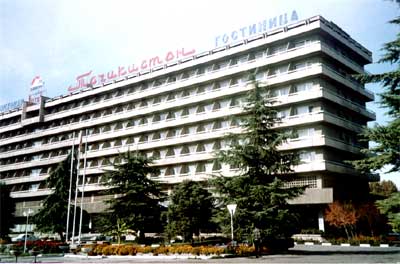
People
Photo Gallery
Tajikistan History
Sai Khosor Travel Agency
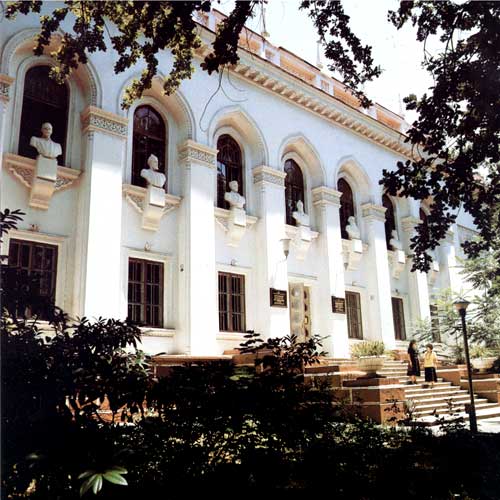
The city also houses the Firdowsi Library, a major library with an impressive collection of medieval Islamic manuscripts.
The main points of interest all lie on, or close to, Prospekt Rudaki which runs from the railway station in the south to the bus station in the north. As well as the principal mosque , this area boasts a synagogue that dates back to the late 19th century, a Russian church and a columned opera house.
Don’t forget visiting a Tajik market because, while you will find souvenirs, your senses will be pleasantly bombarded and, unlike in many developing countries, no-one will harass you to buy anything . Lose yourself in the enormous market on the road west from Dushanbe to the old Hissar Fort, where women in traditional Tajik attire of long, psychedelically coloured dresses and men in embroidered skullcaps sell everything from cotton (one of Tajikistan’s main crops) to vegetables, jewellery, carpets and furniture.
Botanical Gardens
and Zoo
City Information
City Info. in Russian
Dushanbe, Digital Library
Universities & education
Other features in the city include the National Museum of Antiquities of Tajikistan and Unified Museum , situated just north of the railway station in Ploshchad Aym, which has stuffed snow leopards and Marco Polo sheep amongst its exhibits. The ethnographic museum is on ulitsa Somoni, not far from the Hotel Tajikistan.
Ismael Somoni Monument
Botanical Gardens of Dushanbe
Dushanbe Architectural Monuments
Mirzo Tursunzade Mausoleum
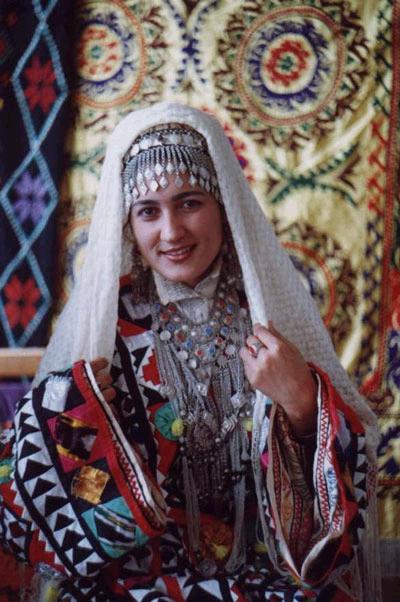
30-km west of Dushanbe, on the wide mountain-fringed plain, you find the remains of an 18th centuary fortress, occupied until 1924 by Ibrahim Beg, the local henchman of the emir of Bukhara. Once a basmachi strong hold, the, the fortress was destroyed by the Red Army and all that remains is reconstructed.A scramble to the top is rewarded with some excellent views. Two madressas (from 18th and 19th centuary)are beside the fortress. The older medresssa (facing the fortress gate) contains a small museum with displays of clothing, ceramics and jewellery.
A 16th centuary mausoleum of Makhtum Azam (an Islamic master) is beyond the medrassas.
Visiting the calm and pleasant Chaykhane (Teahouse), at the foot of the grassy slopes around the fortress is a must.
To get high quickly, contact Intourist, and ask to visit their boar-hunting base north of Dushanbe in Hissar rang. More
*Ancient Sogdian lake of Iskander-kul, north of Dushanbe.
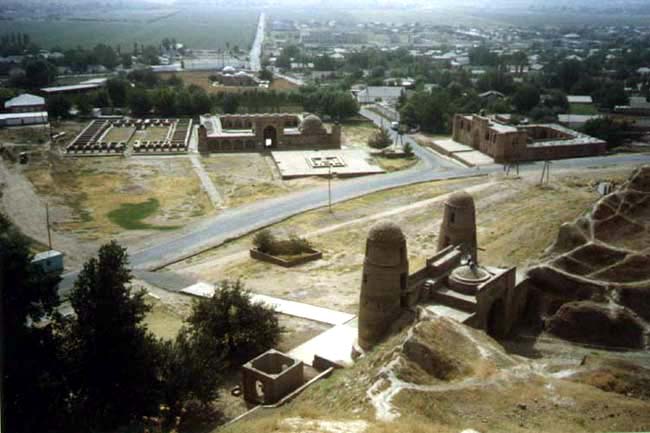
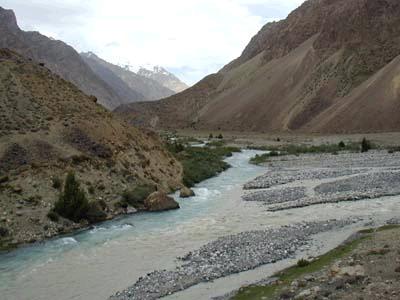
Only 5km from the capital is the crumbling mountain resort of Varzob.
The winding road offers some beautiful views as it passes through villages, before winding between dramatic rocky mountains and twisting its way up to Varzob.
It is a delightful place -a valley with grass and trees as far up as the eye can see, and a narrow but turbulent brook of blue but foamy water at the bottom. Various catering places, serving mostly kabob and fish, dot the side of the brook. Your hosts will bring bread, vodka, and dried nuts to complete what the caterers at the cafe offer. More
*Excursion to the mountain passes of the Kara-Tak , north of Dushanbe, walking 8-10km (5-6 miles) per day, with the baggage being carried by donkeys, and staying in mountain villages.
Nurek is undeniably a fascinating and beautiful place to visit. Nurek, is situated to south-east several hours drive from Dushanbe through dramatic barren hills. Founded in 1961 next to the Vakhsh River, Nurek is an extraordinary Soviet timewarp and home to the world’s tallest dam, at 300m high, which still supplies Tajikistan with most of its electricity.
Drive to the top of the dam to enjoy a spectacular view of the crystal clear waters surrounded by a backdrop of jagged red rock hills.
Note:
The Anzob pass connecting north and south Tajikistan closes in the autumn. Access between Khujand/Penjikent and Dushanbe is possible by air, or by taking a long and circuitous route through Uzbekistan.

*Taj Mahal (Indian)
Addresse: 22 Rudaki street
Tel: +992-372- 23 42 79
E-mail: [email protected]
*Restaurant Kapris (European style)
Address: 32, Ghafurov Street, 82-y mikrorayon
Tel: +992 (0)372- 379 450
*Delhi Darbar (Indian)
Address: 88 Rudaki Street, Dushanbe
Tel: +992 (0)372 -218 863, +992 (0)372 - 242 546
*Restaurant Elite(European & local style)
Address: Chapaev Street (opposite Radio House), Dushanbe
Tel: +992 (0)372- 212 512
*Bar-Restaurant Polonaise
(Exquisite European and Tajik cuisine)
Address: 2nd floor, 35/1 Bohtar Street , Dushanbe
Tel: +992 (0)372 - 212 526
*Restaurant Continent
(Mostly European cuisine with Continent specials )
Address:32, Buchoro Street , Dushanbe
Tel: +992 (0)372 - 214 498
*Bar/Restaurant Intourist-Tojikiston
(European & local style)
(22, Shotemur Street
Tel:+992 (0)372 - 217 077 , +992 (0)372 - 213 352
Fax:+992 (0)372 - 216 426
More
*Shahrom (European style)
Address:16, Kirov (Husein-Zoda) Street, Dushanbe
*Bar Manhattan
Address: 32, Shotemur Street, Dushanbe
*Bar Vostochny (local & Russian style)
Address: 56, Rudaki Avenue
*Cafe Romashka
Address: 33, Rudaki Avenue
*Bar Intourist-Tojikiston- Two bars
(European & local style)
(22, Shotemur Street
Tel:+992 (0)372 - 217 077 , +992 (0)372 - 213 352
Fax:+992 (0)372 - 216 426
*Bar Polonaise
(Exquisite European and Tajik cuisine)
Address: 2nd floor, 35/1 Bohtar Street , Dushanbe
Tel: +992 (0)372 - 212 526
*Rohat teahouse - (interesting)
(traditional Persian teahouse)
Address: 84, Rudaki street
More

opportunities for alpine mountaineering, rock climbing, walking, fishing, or simply relaxing among dramatic mountains and lakes.
For alpine climbing, high level walking tours and lakeland scenery the Fansky Gory (Fann mountains) in the North West of the country, just a couple of hours from both Penjikent and Dushanbe. This is a favorite place for trekking and climbing.
Tajikistan offers the best trekking and most spectacular scenery in Central Asia. In other Central Asian countries the border guards can be hostile, whereas Tajiks are naturally friendly and hospitable, so it’s easier to become friends.
The Pamir mountains, often described as the Roof of the World, are extraordinarily beautiful and one of the last remaining unexplored regions on earth; closed to the outside world for almost a century because of their politically sensitive location between the USSR and China. More about
Soghdiana, a distinct region that intermittently existed as a combination of separate oasis states and sometimes was subject to other states. Two important cities in what is now northern Tajikistan, Khojand (formerly Leninabad) and Panjakent, as well as Bukhoro (Bukhara) and Samarqand (Samarkand) in contemporary Uzbekistan, were Soghdian in antiquity .
In their heartland, the Zarafshan valley, they founded several city-states, as well as colonies along the ancient Silk Routes from Eastern Europe (Crimea) to the Chinese border and Mongolia .
Alexander the Great took this area in the 4th century BC. The Arabs conquered Soghdiana in the early 600s. Under Muslim rule, especially with Samanid support, Soghdiana grew to encompass Maymurgh, Qabodian, Kushaniyya, Bukhara, Kish, Nasaf, Samarqand, and Panjekent, each a virtual kingdom.
The Tajiks came into prominence as a people under the rule of the Samanids (875-999) who undermined and, to a great degree centralized the government. They also revived the ancient urban centers as Bukhara, Samarqand, Merv, Nishapur, Hirat, Balkh, Khujand, Panjekent, and Holbuq which, in turn, elevated the socio-political, economic and, necessarily, cultural dynamics of the new and progressive Samanid state.

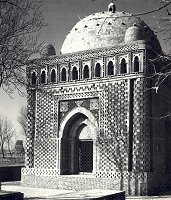
An unknown medieval author called Khojandi "the dwelling of the astronomical science stars" was born here.
In later years Khojand appeared to become the centre of different historical events. Ruined by the Arabs in the eighth century it strongly resisted the Mongol hordes five centuries later having thus provisionally stemmed their advance to the West.
The Bolshoviks never fully trusted this troublesome republic and during the 1930s almost all Tajiks in positions of influence within the government were replaced by stooges from Moscow.
Read more
